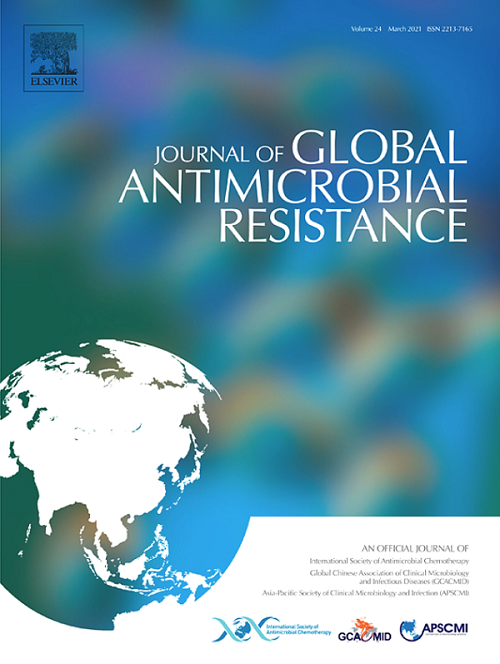Potential drug interaction after withdrawal of nirmatrelvir-ritonavir in hospitalized patients with COVID-19 infection
IF 3.7
3区 医学
Q2 INFECTIOUS DISEASES
引用次数: 0
Abstract
Background
Nirmatrelvir-ritonavir is effective in the treatment of SARS-CoV-2 infection. It can cause drug‒drug interactions (DDIs), even several days after withdrawal, due to irreversible inhibition of the cytochrome enzyme.
Methods
Hospitalized patients diagnosed with COVID-19 infection and treated with nirmatrelvir-ritonavir were retrospectively included according to preset criteria. Personal information, as well as drug use, were obtained from the hospital information system. Potential DDIs were screened and classified according to three databases (FDA fact sheet, University of Liverpool Drug Interactions resources and Lexicomp).
Results
A total of 332 hospitalized patients with COVID-19 infection who received nirmatrelvir-ritonavir treatment were included in this study. The prevalence of potential DDI risk after withdrawal of nirmatrelvir-ritonavir in hospitalized patients was 57.2 %. Most patients resumed potentially interacting medications on the first day of nirmatrelvir-ritonavir withdrawal, and those drugs with DDI risk at the avoidance level mainly included dexamethasone and rivaroxaban, whereas drugs at the caution level mainly included lidocaine.
Conclusion
The prevalence of potential DDI risk after withdrawal of nirmatlevir-ritonavir was high and should be given more attention.
COVID-19感染住院患者停用尼马特韦-利托那韦后潜在的药物相互作用
背景:尼马特利韦-利托那韦治疗SARS-CoV-2感染有效。由于细胞色素酶的不可逆抑制,它可以引起药物-药物相互作用(ddi),甚至在停药后几天。方法:回顾性纳入诊断为COVID-19感染并使用尼马特韦-利托那韦治疗的住院患者。从医院信息系统中获取个人信息和用药情况。根据三个数据库(FDA情况说明书、利物浦大学药物相互作用资源和Lexicomp)筛选和分类潜在的ddi。结果:本研究共纳入332例接受尼马特韦-利托那韦治疗的住院COVID-19感染患者。住院患者停用尼马特韦-利托那韦后潜在DDI风险发生率为57.2%。大多数患者在尼马特利韦-利托那韦停药的第一天恢复了可能相互作用的药物,具有DDI风险的避免级药物主要包括地塞米松和利伐沙班,而具有警告级风险的药物主要包括利多卡因。结论:尼马特韦-利托那韦停药后DDI潜在危险发生率较高,应引起重视。
本文章由计算机程序翻译,如有差异,请以英文原文为准。
求助全文
约1分钟内获得全文
求助全文
来源期刊

Journal of global antimicrobial resistance
INFECTIOUS DISEASES-PHARMACOLOGY & PHARMACY
CiteScore
8.70
自引率
2.20%
发文量
285
审稿时长
34 weeks
期刊介绍:
The Journal of Global Antimicrobial Resistance (JGAR) is a quarterly online journal run by an international Editorial Board that focuses on the global spread of antibiotic-resistant microbes.
JGAR is a dedicated journal for all professionals working in research, health care, the environment and animal infection control, aiming to track the resistance threat worldwide and provides a single voice devoted to antimicrobial resistance (AMR).
Featuring peer-reviewed and up to date research articles, reviews, short notes and hot topics JGAR covers the key topics related to antibacterial, antiviral, antifungal and antiparasitic resistance.
 求助内容:
求助内容: 应助结果提醒方式:
应助结果提醒方式:


